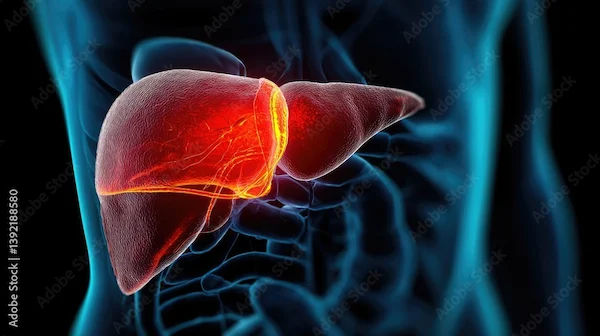CT Scans and MRIs: Key Differences Explained
Confused between a CT scan and an MRI? Learn their key differences, uses, risks, and how each test helps in diagnosing different health conditions.

Written by Dr. Rohinipriyanka Pondugula
Reviewed by Dr. M L Ezhilarasan MBBS
Last updated on 19th Aug, 2025

Introduction
Medical imaging plays a crucial role in diagnosing and treating various health conditions. Two of the most common imaging tests are CT (Computed Tomography) scans and MRI (Magnetic Resonance Imaging) scans. While both provide detailed images of the inside of your body, they work differently and are used for different purposes.
If you or a loved one has been advised to undergo a CT scan or an MRI, you may have questions about what to expect. This article will explain the key differences between these tests, their uses, benefits, and risks in simple, easy-to-understand terms.
What Is a CT Scan?
A CT scan, also called a CAT scan, uses X-rays to create detailed cross-sectional images of your body. Unlike a regular X-ray, which provides a single flat image, a CT scan takes multiple pictures from different angles and combines them to create a 3D view.
When Is a CT Scan Used?
CT scans are often used to:
- Detect bone fractures, tumours, or internal bleeding.
- Diagnose lung conditions like pneumonia or lung cancer.
- Examine blood vessels through CT angiography.
- Guide certain biopsies or surgeries.
How Does a CT Scan Work?
Here’s what generally happens during the scan:
1. You lie on a table that slides into a large, doughnut-shaped machine.
2. The machine rotates around you, taking multiple X-ray images.
3. A computer combines these images to create detailed pictures of your organs, bones, or blood vessels.
Most CT scans take between 5–15 minutes.
Are There Any Risks?
- While CT scans are generally considered safe, it’s helpful to be aware of certain factors that may pose a minimal risk to some individuals.
- Involves exposure to low-dose radiation, which is generally considered safe.
- If contrast dye is used, it may cause mild allergic reactions in rare cases.
What Is an MRI?
An MRI uses strong magnets and radio waves instead of X-rays to produce highly detailed images of soft tissues, organs, and bones.
When Is an MRI Used?
MRIs are best for examining:
- Brain and spinal cord evaluations such as strokes, tumours or nerve damage.
- Joints, muscles, and ligament injuries, including tears or arthritis.
- Heart and blood vessels imaging for structural heart concerns.
- Abdominal organs examination including the liver, kidneys and pancreas.
How Does an MRI Work?
Here’s what to expect during an MRI scan:
1. You lie on a table that slides into a long, narrow tube.
2. The machine creates a strong magnetic field and uses radio waves to generate images.
3. Unlike a CT scan, an MRI does not use radiation.
An MRI usually takes between 30 to 60 minutes.
Consult Top General Physicians
Are There Any Risks?
MRIs do not involve radiation, but a few precautions and potential discomforts may be associated with the procedure.
- The machine can be loud, and you’ll likely be given earplugs or headphones
- Claustrophobia is common due to the narrow enclosed space
- Metal objects or certain implants, such as pacemakers, may not be allowed inside the scanner
Key Differences Between CT Scans and MRIs
Understanding the distinctions may help patients feel more confident when scheduling a test.
Which One Should You Choose?
The choice between a CT scan and an MRI depends on several factors.
- CT scans are quicker and often used in emergencies.
- MRIs provide more detailed images of soft tissues.
- Patients with metal implants may not be eligible for MRI.
- Doctors consider the area being scanned and your medical history before recommending a test.
Tips to Prepare for Imaging Tests
A few simple steps before your scan may help ensure accurate results and a more comfortable experience.
- If you’re claustrophobic, ask about open MRI options.
- Inform your doctor about any allergies or implanted medical devices.
- Stay still during the scan for clearer images.
When to Consult a Doctor?
If your doctor has recommended a CT scan or MRI, it’s important to follow through for an accurate diagnosis. At Apollo 24|7, you can easily book a scan or consult an expert for advice.
Final Thoughts
Both CT scans and MRIs are valuable tools in modern medicine. While CT scans are quicker and better for bones and emergencies, MRIs provide superior detail for soft tissues without radiation. Your doctor will guide you on the best option for your condition.
If you have concerns about the scan process, preparation or safety, do not hesitate to ask questions.
Consult Top General Physicians
Consult Top General Physicians

Dr. Swathi Reddy Perugu
General Physician/ Internal Medicine Specialist
7 Years • MBBS, MD (General Medicine)
Hyderabad
Health plus, Hyderabad
Dr. Paras Gangwal
General Physician/ Internal Medicine Specialist
28 Years • MBBS,MD General Medicine
Delhi
Dr Paras Gangwal Clinic, Delhi

Dr. Swagato Podder
General Practitioner
5 Years • MBBS
Kolkata
GRD POLYCLINIC, Kolkata
Dr. Abhishek Gowda
General Physician/ Internal Medicine Specialist
2 Years • MBBS
Bengaluru
PRESTIGE SHANTHINIKETAN - SOCIETY CLINIC, Bengaluru
Dr Sumanth R
General Physician
2 Years • MBBS
Bengaluru
PRESTIGE SHANTHINIKETAN - SOCIETY CLINIC, Bengaluru
Consult Top General Physicians

Dr. Swathi Reddy Perugu
General Physician/ Internal Medicine Specialist
7 Years • MBBS, MD (General Medicine)
Hyderabad
Health plus, Hyderabad
Dr. Paras Gangwal
General Physician/ Internal Medicine Specialist
28 Years • MBBS,MD General Medicine
Delhi
Dr Paras Gangwal Clinic, Delhi

Dr. Swagato Podder
General Practitioner
5 Years • MBBS
Kolkata
GRD POLYCLINIC, Kolkata
Dr. Abhishek Gowda
General Physician/ Internal Medicine Specialist
2 Years • MBBS
Bengaluru
PRESTIGE SHANTHINIKETAN - SOCIETY CLINIC, Bengaluru
Dr Sumanth R
General Physician
2 Years • MBBS
Bengaluru
PRESTIGE SHANTHINIKETAN - SOCIETY CLINIC, Bengaluru



.webp)
